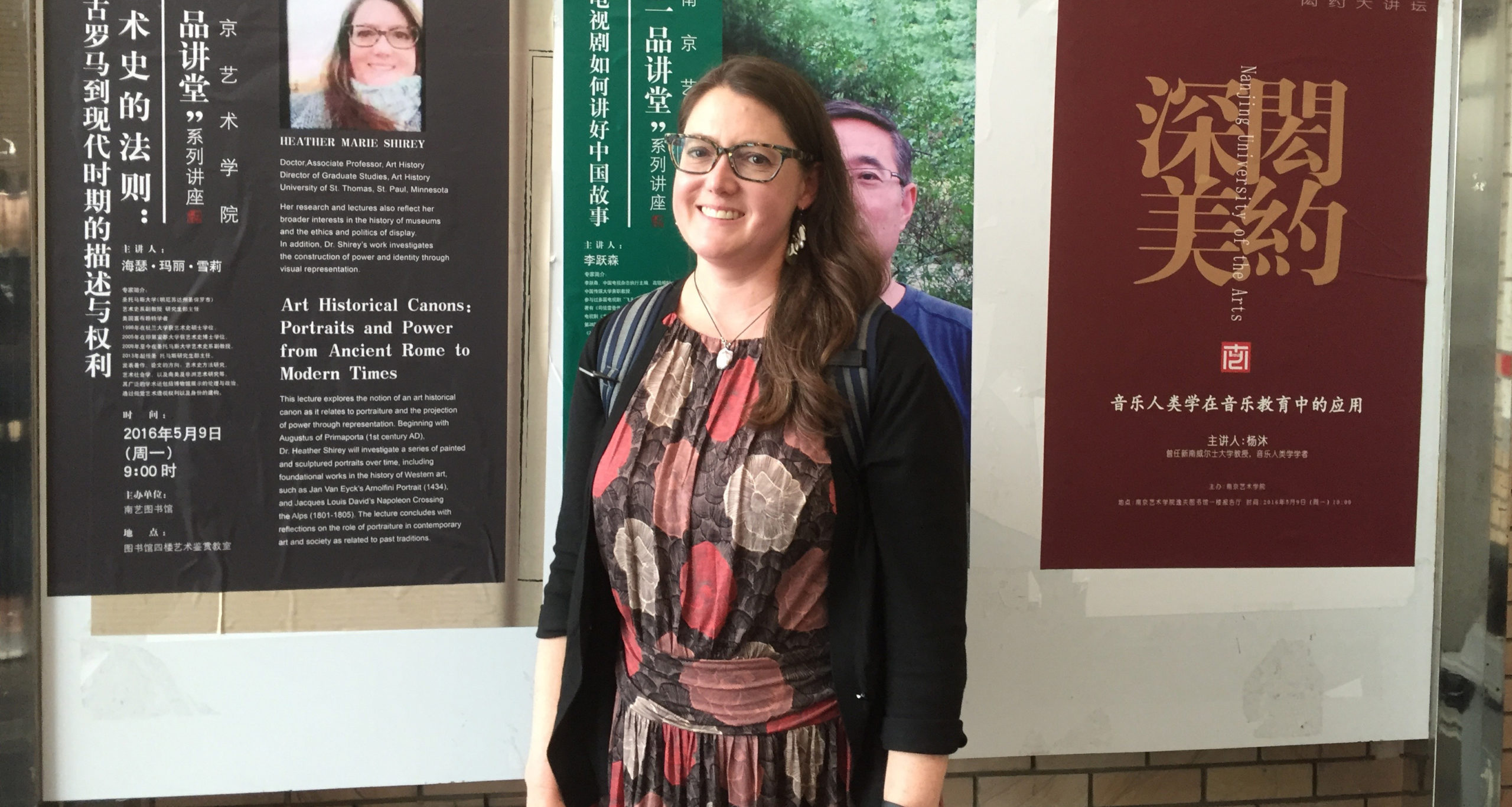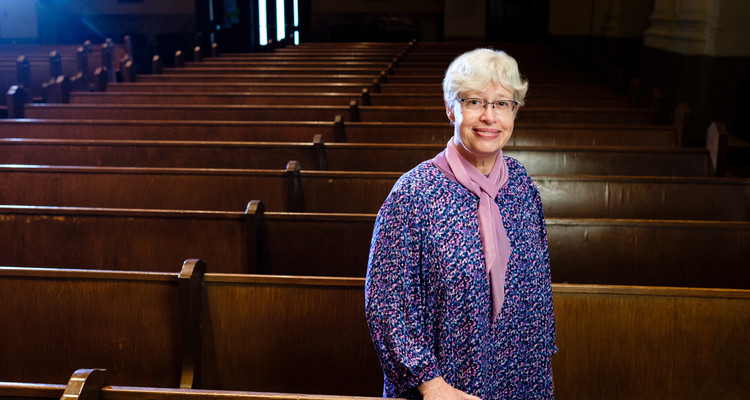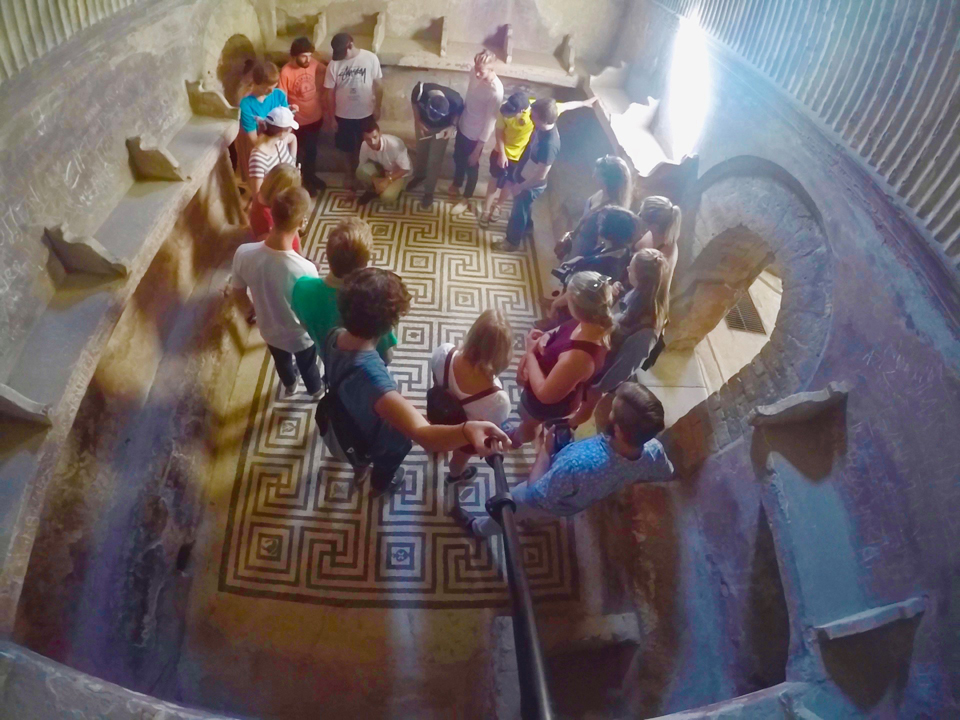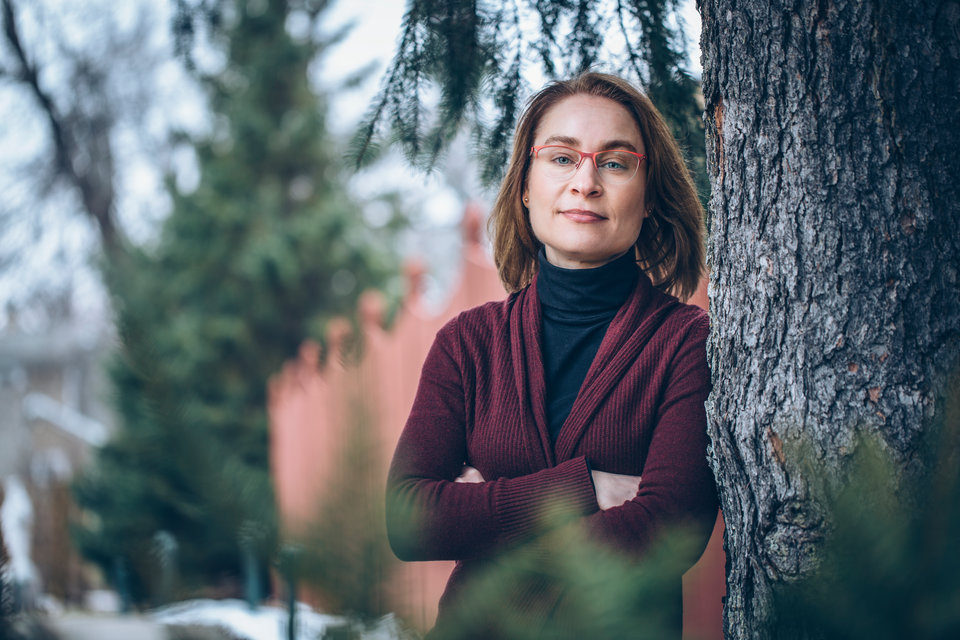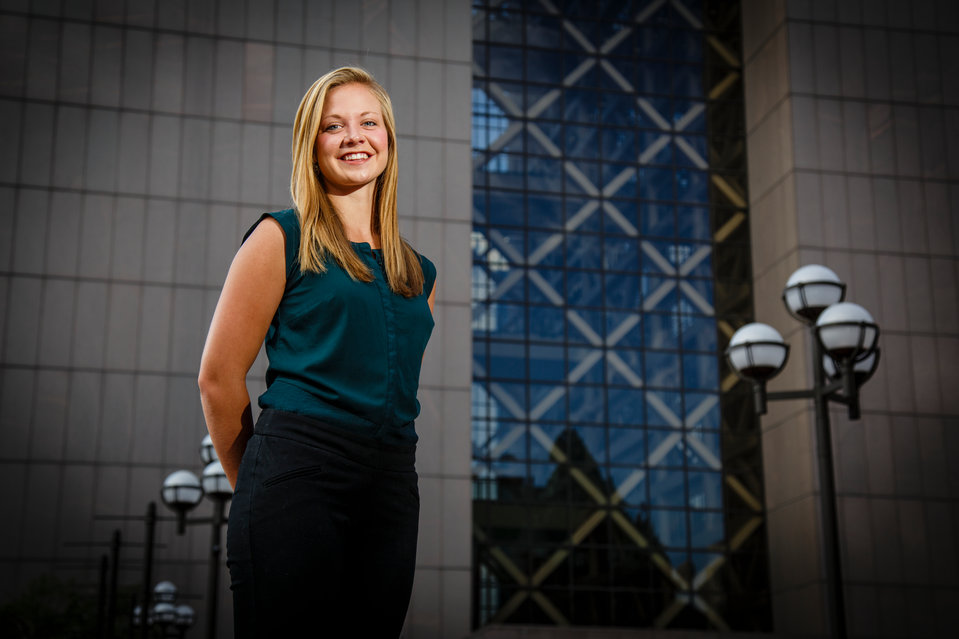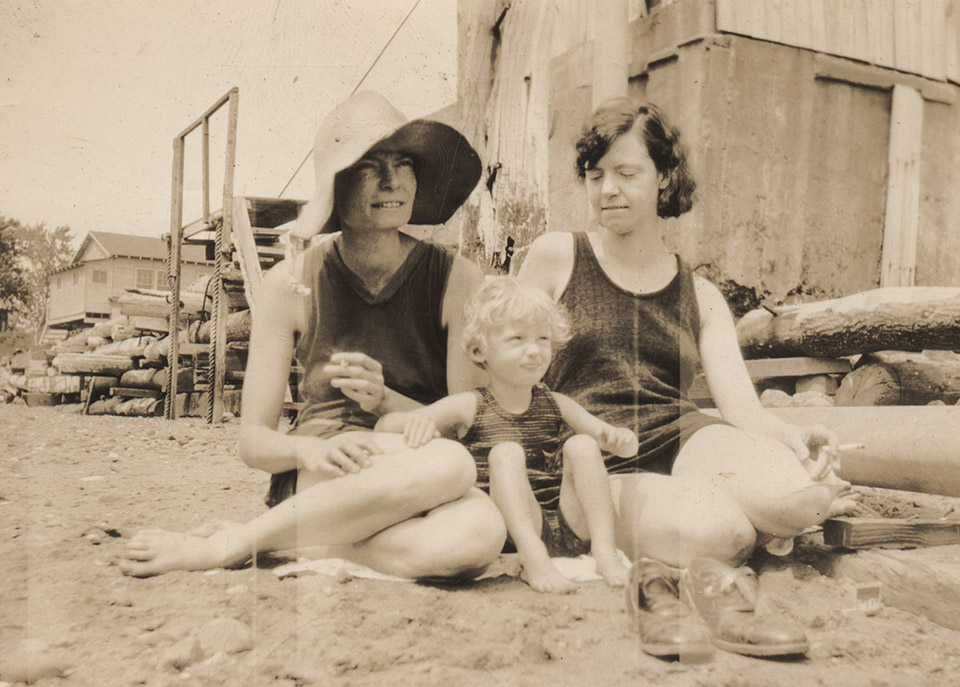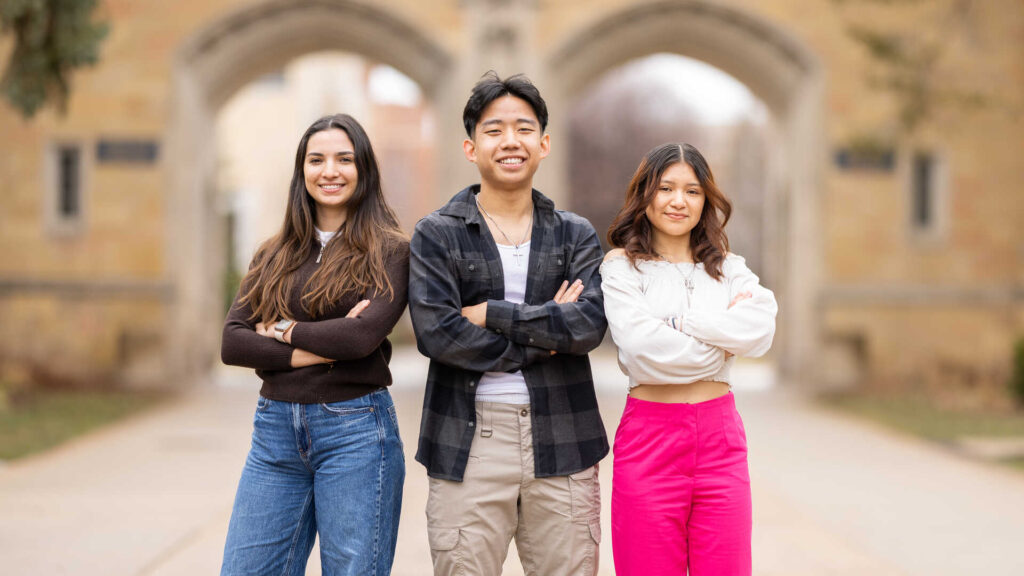There’s a phrase I practiced over and over when I was enrolled in Chinese 111 at St. Thomas in fall 2015: 我是清华大学的教授. 我教艺术史. Don’t know what that means? I’ll translate it to Chinese pinyin: Wŏ shi Qīnghua Daxue de jiaoshou. Wŏ jiao yishu shˇı. Here’s the English translation if you’re still having trouble: “I am a professor at Tsinghua University. I teach art history.” It’s a simple statement, but one I anticipated I would get quite a bit of mileage out of when I packed up my family and relocated to Beijing for five months in spring 2016. How right I was.
Supported by the Fulbright- Terra Foundation Award, my task was to teach art history to graduate students at Tsinghua University, China’s most prestigious institution of highereducation. And no, I am not an expert in Chinese art. I taught the history of American art to Chinese students.
My classes at Tsinghua covered everything from 18th-century portraits to contemporary performance art. It was important to me that my students gained an understanding of American art in its broad social and historical contexts. For that reason, I presented a history of American art and architecture that, in addition to covering famous works of art, also incorporated a penetrating study of race, ethnicity, gender and social class.
In addition to teaching, I traveled widely and delivered lectures throughout China on topics such as slavery and the art of resistance, art and the abolitionist movement, the Great Migration and the Harlem Renaissance, art and the Civil Rights Movement, race and identity in contemporary art, and ethical issues relating to museum collections.
LIVING, TEACHING AND TRAVELING IN CHINA
The Fulbright Program seeks to create bridges by way of people-to-people exchanges built around international research and teaching fellowships. These exchanges are envisioned to be an important path to greater mutual understanding and, with that, more harmonious global relationships.
The Fulbright Scholars Program is a merit-based grant that selects university professors to serve as teachers, mentors and researchers at institutions of higher learning in countriesaround the world. I was assigned to teach two graduate seminars and mentor a handful of advanced Chinese graduate students in their research.
Preparing to live and work in another country is no small matter. I spent the semester prior to the trip gathering reading materials, reassessing what would be accessible to my students in China, packing up my research materials and acquiring what language skills I could in a semester.
I was not expected to speak Chinese, and my courses were taught entirely in English. Most students were prepared for an English-speaking professor, although I took a few by surprisewith my limited Chinese on the first day of class.
Language abilities varied widely in each of the classes I taught. Some of my students spokeEnglish with near fluency, while others struggled, particularly when it came to some of the more convoluted academic texts. I adjusted with some new pedagogical approaches, including more peer-to-peer teaching, which were new to my students too. My experience with these approaches also helped me grow as a teacher in some ways that will be useful now that I am back at St. Thomas.
There were also many logistics of taking my family to live in another country. Once on the ground in Beijing, we had to settle in quickly, doing everything from enrolling my (how many)children in school to equipping our small kitchen, while also jumping into teaching and a lecture tour that allowed us to travel all over China.
It was an honor to be invited through the Fulbright Guest Lecture Program to China’s top institutions in Hangzhou, Chongqing, Shanghai, Guangzhou and Nanjing, as well as to universities in Taiwan. For the program, universities and museums throughout the country select scholars for campus visits, which usually involve a presentation of the scholar’s research, a professional development workshop and mentoring sessions with students.
While traveling beyond Tsinghua University, I generally worked with an interpreter because the level of English among the audience members varied significantly. Working with interpreters was a completely new experience for me and, perhaps inevitably, some challenging moments arose.
One interpreter decided to add his own thoughts on the topic during the course of the lecture, and the editorializing went on much longer than the lecture itself. In other cases, it was a struggle to translate specific academic concepts.
In the end, I think the experience of working with interpreters has helped me think about how to clarify my own writing and speaking to make the material more accessible, no matter what the common language of the audience members might be.
ART HISTORY AND CROSS-CULTURAL UNDERSTANDING
I think that art provides a window into another culture. It lets us see political and social differences over time, of course, but it also allows us to reflect on the unity of all humans, our shared desires for home, family and security. But art must be properly contextualized for this to work, and this is where scholars and museums make a significant contribution. At the Shanghai Museum I saw an exhibition of Buddhism in Japan that provided me with an understanding of the similarities and differences in Chinese traditions and also connected to how I see Buddhism practiced right here in Minnesota.
A museum that presents historical arts from China alongside works from West Africa and Europe can allow us to understand shared ways of representing political authority in these different places over the course of time. It is the job of the art historian to help us understand that individual objects are not simply to be appreciated for their aesthetic beauty nor are they best understood in isolation, they must be compared and contrasted with one another and they must be inserted in a rich political, social and cultural context.
I enjoyed the daily accomplishments that came with successful interactions in Chinese. Buying more minutes for my phone, communicating a change in schedule to our children’s bus driver, directing a cab driver to a hard-to-reach location, finding an art gallery that has no address – these were daily victories. But it was the deeper conversations about politics, culture and art that have changed my understanding of the world.
What really interested me was the way in which my Chinese students and colleagues approach key questions from different perspectives than I do, given our cultural backgrounds. One interesting discussion, for example, revolved around the concept of public art. Some of my own research projects focus on site-specific public art in cities such as London and Salvador da Bahia, Brazil. I am interested in the dialogues that emerge around works of art in public spaces, particularly as these conversations relate to the negotiation of shared identities.
On the first day of class, a group of students declared that there is no public art in China. I was confused by this, because monumental sculpture is an important part of the landscape in China’s cities, perhaps most noticeably in Beijing.
In the course of discussions with students, we came to understand that public art defined from my American perspective (art that is dedicated to promoting dialogue and civil discourse about community issues) does not exist in the Chinese cultural context. True, there is publically funded art, but it represents the monolithic voice of the government rather than a dialogue shaped by the voices of a community.
Finally, discussions about race and ethnicity were eye opening. The United States, a culturally diverse society, is grappling with fundamental issues about race and social justice. I am consumed by these issues and dedicate my teaching to creating an understanding of race and representation as part of a larger quest for social justice. Although China recognizes its ethnic minority groups, it is largely a homogeneous society. From what I encountered, there is limited critical engagement with issues of race and ethnicity in China.
During my time there, an offensive, racist advertisement ran on Chinese television stations. This ad, produced by a Chinese agency to promote a Chinese product (laundry soap), drew on many negative stereotypes of a race-based society in the United States. I think some students were quite shocked to really learn about the history of some rather racist imagery that they had previously consumed without knowledge of its historical legacy.
SUSTAINABLE UNDERSTANDING
Although the five months passed quickly, the Fulbright experience in China was absolutely transformative both personally and professionaally. At a time when the media reports many tensions between the United States and China, I have found that peopleto- people engagement was extremely positive. The people I encountered in China were very interested in knowing more about life in the United States on a much deeper level that goes beyond what they encounter in popular culture. This experience has given me the opportunity to develop trusting relationships, the foundation of sustainable exchange and understanding.
Last June, the State Department invited me to participate in a small roundtable discussion on the future of international academic exchange and its role in public diplomacy. This meeting was part of the annual high-level governmental talks between the United States and China. Three American and three Chinese Fulbright scholars met with Richard Stengal, undersecretary of state for public affairs and public diplomacy, and Mala Adiga, assistant secretary of state for academic programs. It was a productive discussion that showed the State Department’s great commitment to academic exchanges as a way of achieving greater mutual understanding.
Whether it is a long-term teaching or learning exchange or even a short-term embedded program abroad, I am convinced that teaching and studying art history is truly an important path to reaching greater understanding across cultures, and with it, a more peaceful and just future for all of us. ■
